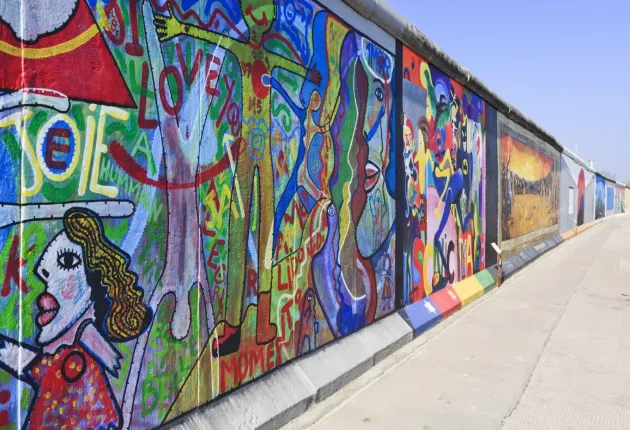
Understanding the Context and Construction of the Berlin Wall
The Berlin Wall stands as a powerful symbol of the Cold War era, serving as a physical and ideological divide between East and West Germany. Constructed in 1961 by the German Democratic Republic (GDR), also known as East Germany, the wall was intended to prevent the mass exodus of East Germans to West Germany. This division not only separated families but also represented the broader political tensions of the time. In this introduction, we will delve into the history of the Berlin Wall, exploring its construction, its role in Cold War division, and its impact on both East and West Germany.
Read more >> Explore the Rich History of Berlin's Museum Island
The Impact and Significance of the Berlin Wall on Germany and the World
The Berlin Wall stands as a powerful symbol of the Cold War era and the division between East and West. Its construction in 1961 by the German Democratic Republic (GDR) was a manifestation of the deepening tensions between the Soviet Union and its Eastern Bloc allies on one side, and the United States and its Western allies on the other. This physical barrier, also known as the Iron Curtain, separated families, friends, and communities for nearly three decades. One of the most iconic checkpoints along this wall was Checkpoint Charlie, which became a potent symbol of East-West confrontation. In this introduction, we will explore the significance of the Berlin Wall, its impact on international relations during the Cold War period, and delve into how Checkpoint Charlie became a focal point for global attention.
Key Events and Timeline of the Berlin Wall's Existence
The Berlin Wall is a significant historical landmark that divided the city of Berlin from 1961 to 1989. Constructed by the German Democratic Republic (GDR), its purpose was to prevent East Germans from fleeing to West Germany. The construction of the wall began in 1961, and over time, additional fortifications and checkpoints were added to make escape even more challenging. This timeline of events provides an overview of how the Berlin Wall evolved during its existence, highlighting key moments that shaped its structure and impact on the people living in both sides of the city.
Life on Both Sides of the Berlin Wall: Stories from East and West Berliners
Life in East Berlin under communist rule was characterized by tight government control and constant surveillance by the Stasi, the secret police. The Stasi employed various tactics to maintain their power and suppress dissent, including widespread spying on citizens, censorship of media and communication, and a pervasive atmosphere of fear and suspicion. This period in history provides important insights into the impact of authoritarian regimes on individual freedoms and the lengths to which they will go to maintain control.
The Fall of the Berlin Wall: A Symbolic Moment in History
The fall of the Berlin Wall on November 9th, 1989, marked a significant moment in history that brought about immense joy and celebration. This iconic event not only symbolized the reunification of East and West Germany but also represented the triumph of freedom over oppression. In this timeline, we will explore the key events leading up to this historic day and delve into the enthusiastic celebrations that ensued as people from all walks of life came together to commemorate this momentous occasion.
Remembering the Past: Visiting The Berlin Wall Memorial Sites and Museums
The Berlin Wall, a symbol of division and oppression during the Cold War, once stood as a physical barrier separating East and West Berlin. Today, while the wall itself no longer exists, its impact can still be felt in various memorial sites scattered throughout Berlin. These memorial sites serve as powerful reminders of the city's tumultuous past and provide visitors with an opportunity to learn about the history of this iconic structure. Among these sites are the East Side Gallery, where sections of the wall have been preserved and transformed into a vibrant open-air art gallery, and the Checkpoint Charlie Museum, which documents stories of escape attempts and life in divided Berlin. In this article, we will delve into these locations to understand their significance in preserving the memory of the Berlin Wall.
Reflecting on The Legacy of The Berlin wall
The Berlin Wall, a symbol of division and oppression, stood for nearly three decades before its fall in 1989. Its construction in 1961 marked a significant turning point in the Cold War and had a profound impact on the lives of those living in East and West Germany. Today, as we reflect on the legacy of the Berlin Wall, we are reminded of the human cost of political ideologies and the power of unity and freedom. In this section, we will explore the historical context surrounding the construction and fall of the Berlin Wall, its impact on individuals and communities, and its enduring significance in shaping our understanding of global politics and human rights.








Showing 0 verified guest comments